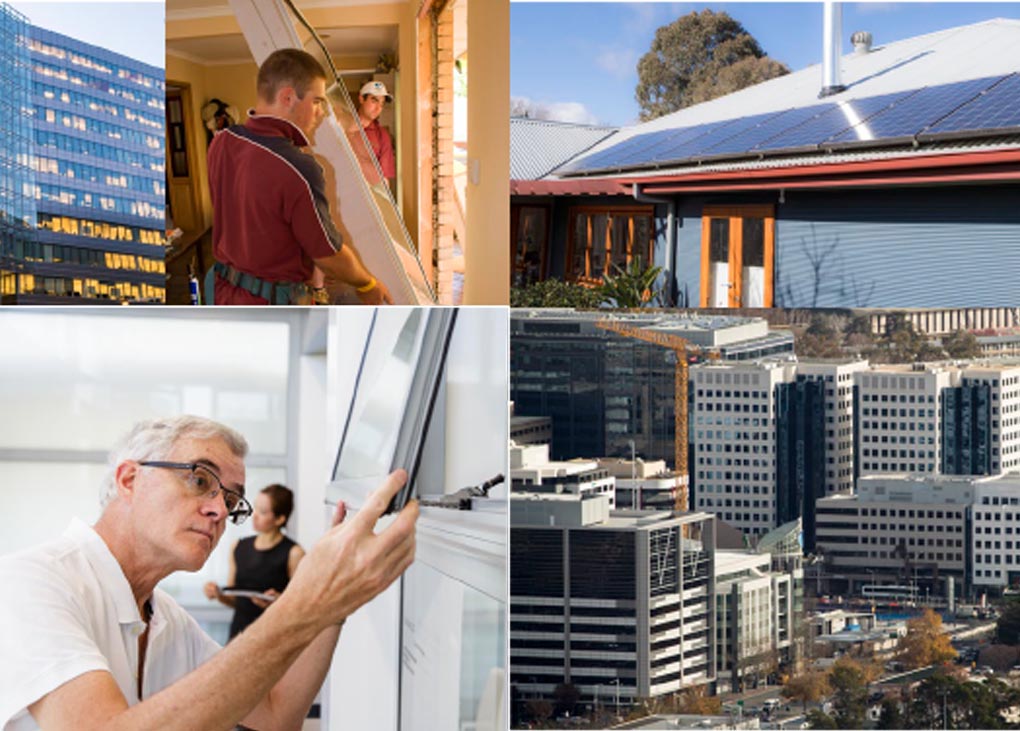At its meeting on November 22, 2019, the COAG Energy Ministers agreed to update the Trajectory for Low Energy Buildings to cover existing buildings.
The addendum is the second stage of the national plan for a trajectory towards zero energy (and carbon) ready buildings for Australia. It provides a suite of initiatives to improve the energy efficiency of existing residential and commercial buildings:
- Developing information, training and energy rating tools for households and businesses to enable greater understanding of energy efficiency options and applications
- Developing and expanding targeted building policies, including disclosure of energy performance, minimum energy efficiency standards for rental properties, renovations and refurbishments, improving heating, ventilation and cooling, and energy productivity in government operations
- Identifying and developing supporting measures, including specific measures for strata-titled buildings, financial initiatives, appliance standards and labelling, specific measures for vulnerable households, a national dataset and collection process for existing homes, and other targeted initiatives.
The Australian Sustainable Built Environment Council (ASBEC) has welcomed the addendum. It points out that existing buildings contribute to almost a quarter of Australia’s emissions, along with more than half of the country’s electricity consumption, through their operation alone. Buildings could also meet over half of the national energy productivity target, and more than one quarter of Australia’s national emissions target.
“Low-energy homes and commercial buildings can provide great outcomes in terms of energy and emissions, whilst also delivering much more,” says ASBEC’s Executive Director, Suzanne Toumbourou.
“More energy-efficient buildings offer more resilience to extreme weather, better comfort and reduce stress on the electricity grid.”
ASBEC’s modelling has shown that, with the right level of support, Australia’s building sector could deliver over a quarter of Australia’s 2030 emissions reduction target, while saving $20 billion and creating a healthier, more productive built environment.
The Australian Institute of Refrigeration, Air Conditioning and Heating (AIRAH) also applauded the COAG Energy Ministers’ decision.
“In line with AIRAH’s mission to help create safe, sustainable, healthy and effective environments, we wholeheartedly support the widening of the scope of the trajectory to include existing buildings,” says AIRAH CEO Tony Gleeson, M.AIRAH.
“As the addendum points out, improving HVAC systems in existing buildings can deliver significant benefits such as a reduction in utility bills, increased comfort of occupants, more reliable indoor temperatures, and lower environmental impact .”
An alliance of community groups, including the Australian Council of Social Service, National Shelter, Brotherhood of St Laurence and Renew, has also called to substantially improve the energy efficiency of existing homes, in the interests of healthier, safer and more affordable housing for all Australians.
“The COAG Energy Council’s ‘Trajectory for Low Energy Existing Buildings’ provides a critical commitment to helping Australians save money on energy bills, lower emissions, ease the strain on our energy infrastructure and be truly comfortable and safe in our buildings, in all extremes of the Australian climate,” says Toumbourou.
 Mark Vender
Mark Vender


Leave a Reply